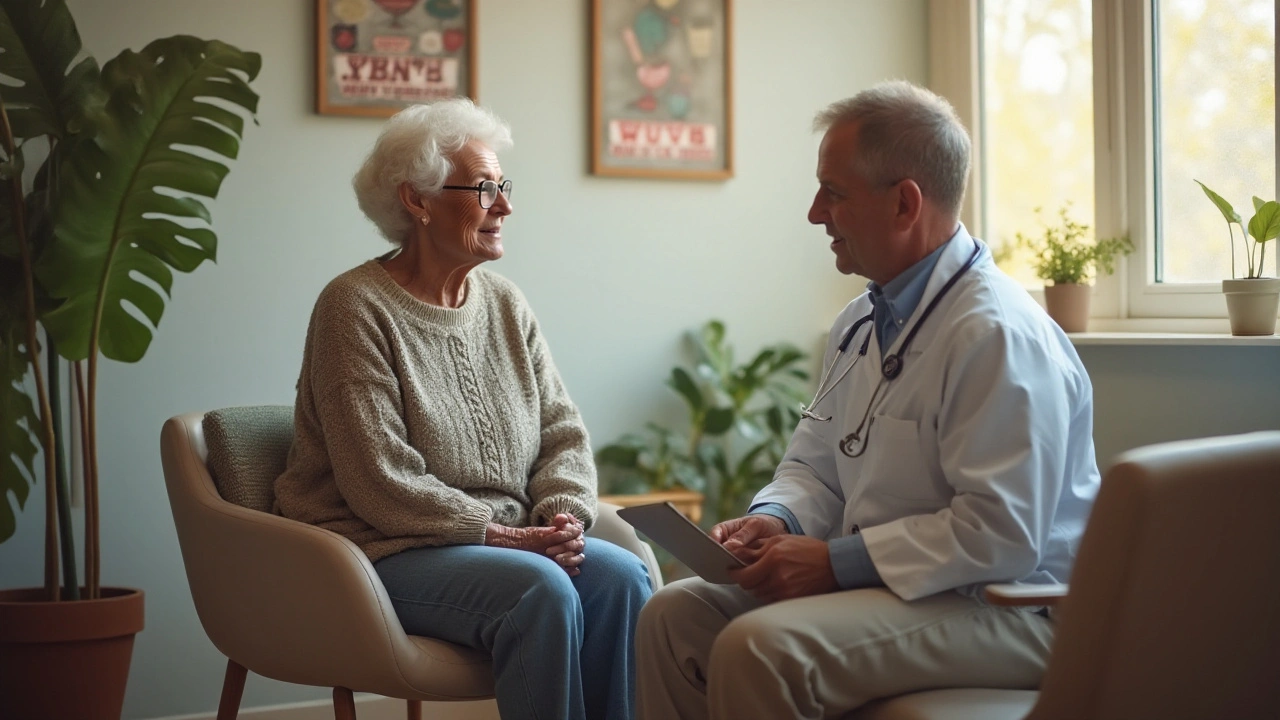- Modafresh vs. Other Modafinil Options: In‑Depth Comparison Oct 10, 2025
- Online Pharmacy modapharma.com: Safe Medication Access and Buyer Insights Aug 14, 2025
- Capecitabine vs. Other Chemotherapy Drugs: What You Need to Know Nov 3, 2025
- How to Safely Buy Cheap Generic Prozac Online Oct 7, 2025
- Unlock the Power of Safed Musli: Your Organic Boost in a World of Artificial Enhancements Dec 27, 2023
Elderly Pain Management: Practical Tips for Safer Relief
If you’re 65 or older and chronic pain is slowing you down, you’re not alone. Many seniors juggle aches from arthritis, back problems, or age‑related muscle loss. The good news is you can take control without diving into risky medication mixes. Below are real‑world tips that work for most older adults.
Common Pain Sources in Seniors
Joint pain from osteoarthritis tops the list, especially in knees, hips, and hands. Lower‑back pain often follows years of heavy lifting or a slip‑and‑fall. Muscle stiffness rises after a period of inactivity, and nerve pain (like sciatica) can flare up from spinal changes. Recognizing the exact source helps you pick the right treatment, not a one‑size‑all approach.
Safe Strategies to Reduce Pain
Talk to your doctor first. Even over‑the‑counter (OTC) meds can interact with prescription drugs or health conditions. Common safe options include acetaminophen (up to 3,000 mg daily for most seniors) and low‑dose ibuprofen if your stomach and kidneys are healthy. If you need stronger relief, ask about low‑dose opioids or topical patches—always follow the prescribed schedule.
Non‑drug methods work wonders. A warm shower or heating pad eases muscle tightness. Gentle stretching or tai‑chi for 10‑15 minutes a day improves joint mobility and cuts stiffness. Water‑based exercise, like pool walking, reduces impact while strengthening muscles. Physical therapists can tailor a routine that matches your ability level.
Mind your posture and footwear. Shoes with good arch support lower knee and hip strain. Using a lumbar roll or a firm chair when sitting for long periods can prevent back pain from building up. Small adjustments add up to big comfort gains.
Watch your nutrition. Foods rich in omega‑3 fatty acids (salmon, walnuts) have mild anti‑inflammatory effects. Staying hydrated helps keep discs in the spine hydrated, reducing pain spikes. A balanced diet also supports overall healing.
Monitor side effects. If you notice dizziness, nausea, or sudden confusion after starting a new medication, stop and call your healthcare provider. Keep a daily log of pain levels, meds taken, and any new symptoms. This record makes it easier for doctors to fine‑tune your plan.
Finally, don’t ignore the emotional side of chronic pain. Feeling isolated or down can amplify discomfort. Joining a senior exercise class or a support group adds social connection and often distracts from the pain.
Managing pain as you age is about mixing safe medicines with practical lifestyle tweaks. Start with a doctor visit, add a few low‑impact activities, and keep track of what helps. Over time you’ll find a balance that lets you stay active, independent, and comfortable.
Etoricoxib Use in Elderly: Vital Considerations for Safe Pain Management
- Garrick Elderton
- Jan 8, 2025
Etoricoxib, a selective COX-2 inhibitor, is popular for treating pain and inflammation in conditions such as arthritis. This article explores the special considerations for administering etoricoxib in older adults, focusing on its safety profile, potential side effects, and the importance of dosage adjustments. It emphasizes the clinician's role in monitoring the use of this drug in elderly patients and provides tips for ensuring effective and safe pain management practices. Understanding the risks and benefits of etoricoxib in seniors is crucial for maximizing its therapeutic effects while minimizing adverse reactions.
